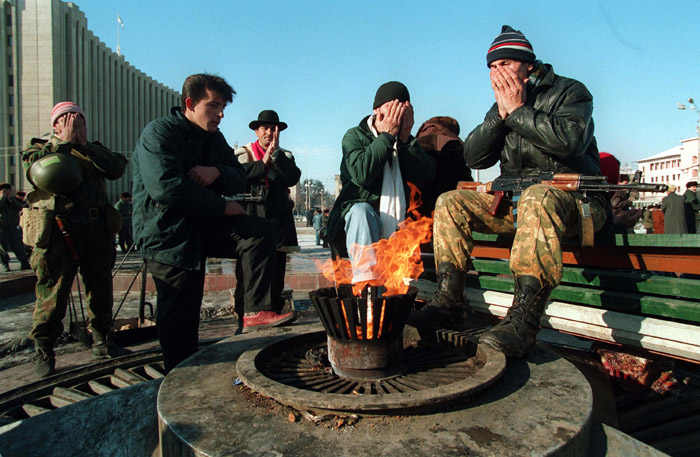|
OMON
OMON (russian: ОМОН – Отряд Мобильный Особого Назначения , translit = Otryad Mobil'nyy Osobogo Naznacheniya , translation = Special Purpose Mobile Unit, , previously ru , Отряд Милиции Особого Назначения , translit = Otryad Militsii Osobogo Naznacheniya , translation = Special Purpose Unit of the Militia) is a system of special police units within the National Guard of Russia. It previously operated within the structures of the Soviet and Russian Ministries of Internal Affairs (MVD). Originating as the special forces unit of the Soviet Militsiya in 1988, it has played major roles in several armed conflicts during and following the 1991 dissolution of the Soviet Union. OMON is much larger and better known than SOBR, another special-police branch of the National Guard of Russia. In modern contexts, OMON serves as a riot police group, or as a gendarmerie-like paramilitary force. OMON units also exist in Bela ... [...More Info...] [...Related Items...] OR: [Wikipedia] [Google] [Baidu] |
The Barricades
The Barricades ( lv, Barikādes) were a series of confrontations between the Republic of Latvia and the Union of Soviet Socialist Republics in January 1991 which took place mainly in Riga. The events are named for the popular effort of building and protecting barricades from 13 January until about 27 January. Latvia, which had declared restoration of independence from the Soviet Union a year earlier, anticipated that the Soviet Union might attempt to regain control over the country by force. After attacks by the Soviet OMON on Riga in early January, the government called on people to build barricades for protection of possible targets (mainly in the capital city of Riga and nearby Ulbroka, as well as Kuldīga and Liepāja). Six people were killed in further attacks, several were wounded in shootings or beaten by OMON. Most victims were shot during the Soviet attack on the Latvian Ministry of the Interior on January 20, while another person died in a building accident rein ... [...More Info...] [...Related Items...] OR: [Wikipedia] [Google] [Baidu] |
Soviet OMON Assaults On Lithuanian Border Posts
Several Soviet OMON assaults on Lithuanian border posts occurred in 1991, after Lithuania declared its independence from the Soviet Union on 11 March 1990. As a Soviet republic, the Lithuanian SSR did not have a state border with customs or checkpoints. The newly declared Republic of Lithuania began establishing the State Border Guard Service, before it was internationally recognized on 27 August 1991 by the states of the European Community. These posts also became a symbol of its struggle for independence. The Soviet government viewed the customs posts as illegal and sent the OMON (Special Purpose Police Unit) troops to harass the posts, especially those along the eastern border with Belarus. The unarmed custom officers and armed policemen were intimidated, beaten or killed, their cars were stolen or bombed, the posts were burned down or wrecked, and work of the checkpoints was otherwise disrupted. Two of the incidents resulted in the deaths of a total of eight Lithuanian ... [...More Info...] [...Related Items...] OR: [Wikipedia] [Google] [Baidu] |
National Guard Of Russia
The National Guard of the Russian Federation (russian: Федеральная служба войск национальной гвардии Российской Федерации , translit = Federal'naya sluzhba voysk natsional'noy gvardii Rossiyskoy Federatsii , translation = Federal Service of the Troops of the National Guard of the Russian Federation) or Rosgvardiya (russian: Росгвардия) is the internal military force of Russia, comprising an independent agency that reports directly to the President of Russia Vladimir Putin under his powers as Supreme Commander-in-Chief and Chairman of the Security Council. The National Guard is separate from the Russian Armed Forces. A law signed by Putin established the federal executive body in 2016. The National Guard has the stated mission of securing Russia's borders, taking charge of gun control, combating terrorism and organized crime, protecting public order and guarding important state facilities. The establish ... [...More Info...] [...Related Items...] OR: [Wikipedia] [Google] [Baidu] |
SOBR
The Special Rapid Response Unit or SOBR (russian: СОБР - Специальный Отряд Быстрого Реагирования, Spetsial'niy Otryad Bystrovo Reagirovaniya, lit. ''Special Unit of Quick Response''), from 2002 to 2011 known as OMSN (''Otryad Militsii Spetsial'nogo Naznacheniya'', Special Police Unit), is a spetsnaz unit of the National Guard of Russia.With their military equipment, uniforms and training, the OMON and SOBR constitute a rapid-reaction and rapid-insertion military force available to the regular police - normally deployable at the discretion of a police local command. They serve a similar function to SWAT. Groups named "SOBR" also operate in other post-Soviet countries - such as Kazakhstan and Kyrgyzstan. History SOBR was formed on February 10, 1992, and was subordinated to the "Directorate for combating the Organized Crime" under the Russian Interior Ministry ( MVD). SOBR units were composed of senior-ranking police officers, better t ... [...More Info...] [...Related Items...] OR: [Wikipedia] [Google] [Baidu] |
First Nagorno-Karabakh War
The First Nagorno-Karabakh War, referred to in Armenia as the Artsakh Liberation War ( hy, Արցախյան ազատամարտ, Artsakhyan azatamart) was an ethnic conflict, ethnic and territorial conflict that took place from February 1988 to May 1994, in the enclave of Nagorno-Karabakh in southwestern Azerbaijan, between the majority ethnic Armenians of Nagorno-Karabakh backed by Armenia, and the Republic of Azerbaijan. As the war progressed, Armenia and Azerbaijan, both former Republics of the Soviet Union, Soviet Republics, entangled themselves in protracted, undeclared mountain warfare in the mountainous heights of Karabakh as Azerbaijan attempted to curb the secessionist movement in Nagorno-Karabakh. The National Assembly (Nagorno-Karabakh), enclave's parliament had voted in favor of uniting with Armenia and a referendum, boycotted by the Azerbaijani population of Nagorno-Karabakh, was held, in which a majority voted in favor of independence. The demand to unify with Arme ... [...More Info...] [...Related Items...] OR: [Wikipedia] [Google] [Baidu] |
Second Chechen War
The Second Chechen War (russian: Втора́я чече́нская война́, ) took place in Chechnya and the border regions of the North Caucasus between the Russian Federation and the Chechen Republic of Ichkeria, from August 1999 to April 2009. In August 1999, Islamist fighters from Chechnya infiltrated Russia's Dagestan region, violating Russia's borders. During the initial campaign, Russian military and pro-Russian Chechen paramilitary forces faced Chechen separatists in open combat and seized the Chechen capital Grozny after a winter siege that lasted from December 1999 until February 2000. Russia established direct rule over Chechnya in May 2000 although Chechen militant resistance throughout the North Caucasus region continued to inflict heavy Russian casualties and challenge Russian political control over Chechnya for several years. Both sides carried out attacks against civilians. These attacks drew international condemnation. In mid-2000, the Russian ... [...More Info...] [...Related Items...] OR: [Wikipedia] [Google] [Baidu] |
Riot Police
Riot police are police who are organized, deployed, trained or equipped to confront crowds, protests or riots. Riot police may be regular police who act in the role of riot police in particular situations or they may be separate units organized within or in parallel to regular police forces. Riot police are used in a variety of different situations and for a variety of different purposes. They may be employed to control riots as their name suggests, to disperse or control crowds, to maintain public order or discourage criminality, or to protect people or property. Riot gear Riot police often use special equipment termed riot gear to help protect themselves and attack others, oftentimes simultaneously. Riot gear typically includes personal armor, batons, and riot helmets. Many riot police teams also deploy specialized less-than-lethal weapons, such as pepper spray, tear gas, rifles that fire rubber bullets, stun grenades, water cannons and Long Range Acoustic Devices. L ... [...More Info...] [...Related Items...] OR: [Wikipedia] [Google] [Baidu] |
January Events (Lithuania)
, partof = Revolutions of 1989, Singing Revolution, and Dissolution of the Soviet Union , image = , caption = A man with a Lithuanian flag in front of a Soviet tank, 13 January 1991 , date = 11–13 January 1991 , place = Lithuania , coordinates = , map_type = , latitude = , longitude = , map_size = , map_caption = , map_label = , territory = , result = Lithuanian victory * Soviet forces withdraw from the cities * Lithuanian statehood preserved , status = , combatant1 = * Lithuanian Riflemen's Union , combatant2 = * Soviet Army ** 76th Airborne DivisionLithuanians celeb ... [...More Info...] [...Related Items...] OR: [Wikipedia] [Google] [Baidu] |
1993 Russian Constitutional Crisis
The 1993 Russian constitutional crisis, also known as the 1993 October Coup, Black October, the Shooting of the White House or Ukaz 1400, was a political stand-off and a constitutional crisis between the Russian president Boris Yeltsin and the Supreme Soviet of the Russian Federation that was resolved by Yeltsin using military force. The relations between the president and the parliament had been deteriorating for some time. The power struggle reached its crisis on 21 September 1993, when President Yeltsin intended to dissolve the country's highest body ( Congress of People's Deputies) and parliament ( Supreme Soviet), although the constitution did not give the president the power to do so. Yeltsin justified his orders by the results of the referendum of April 1993, although many in Russia both then and now claim that referendum was not won fairly. In response, the parliament declared the president's decision null and void, impeached Yeltsin and proclaimed vice president ... [...More Info...] [...Related Items...] OR: [Wikipedia] [Google] [Baidu] |
Militsiya
''Militsiya'' ( rus, милиция, , mʲɪˈlʲitsɨjə) was the name of the police forces in the Soviet Union (until 1991) and in several Eastern Bloc countries (1945–1992), as well as in the non-aligned SFR Yugoslavia (1945–1992). The term continues in common and sometimes official usage in some of the individual former Soviet republics such as Belarus, Tajikistan, Uzbekistan and Kyrgyzstan, as well as in the partially recognised or unrecognised republics of Abkhazia, South Ossetia, Transnistria, DNR and LNR. Name and status The name ''militsiya'' as applied to police forces originates from a Russian Provisional Government decree dated April 17, 1917, and from early Soviet history: both the Provisional Government and the Bolsheviks intended to associate their new law-enforcement authority with the self-organisation of the people and to distinguish it from the czarist police. The militsiya was reaffirmed in Russia on October 28 (November 10, according to th ... [...More Info...] [...Related Items...] OR: [Wikipedia] [Google] [Baidu] |
Dissolution Of The Soviet Union
The dissolution of the Soviet Union, also negatively connoted as rus, Разва́л Сове́тского Сою́за, r=Razvál Sovétskogo Soyúza, ''Ruining of the Soviet Union''. was the process of internal disintegration within the Soviet Union (USSR) which resulted in the end of the country's and its federal government's existence as a sovereign state, thereby resulting in its constituent republics gaining full sovereignty on 26 December 1991. It brought an end to General Secretary Mikhail Gorbachev's (later also President) effort to reform the Soviet political and economic system in an attempt to stop a period of political stalemate and economic backslide. The Soviet Union had experienced internal stagnation and ethnic separatism. Although highly centralized until its final years, the country was made up of fifteen top-level republics that served as homelands for different ethnicities. By late 1991, amid a catastrophic political crisis, with several republics alr ... [...More Info...] [...Related Items...] OR: [Wikipedia] [Google] [Baidu] |
First Chechen War
The First Chechen War, also known as the First Chechen Campaign,, rmed conflict in the Chechen Republic and on bordering territories of the Russian FederationФедеральный закон № 5-ФЗ от 12 января 1995 (в редакции от 27 ноября 2002) "О ветеранах" or the First Russian-Chechen war, was a war of independence which the Chechen Republic of Ichkeria waged against the Russian Federation from December 1994 to August 1996. The first war was preceded by the Russian Intervention in Ichkeria, in which Russia tried to covertly overthrow the Ichkerian government. After the initial campaign of 1994–1995, culminating in the devastating Battle of Grozny, Russian federal forces attempted to seize control of the mountainous area of Chechnya, but they faced heavy resistance from Chechen guerrillas and raids on the flatlands. Despite Russia's overwhelming advantages in firepower, manpower, weaponry, artillery, combat vehicles, airstrikes an ... [...More Info...] [...Related Items...] OR: [Wikipedia] [Google] [Baidu] |
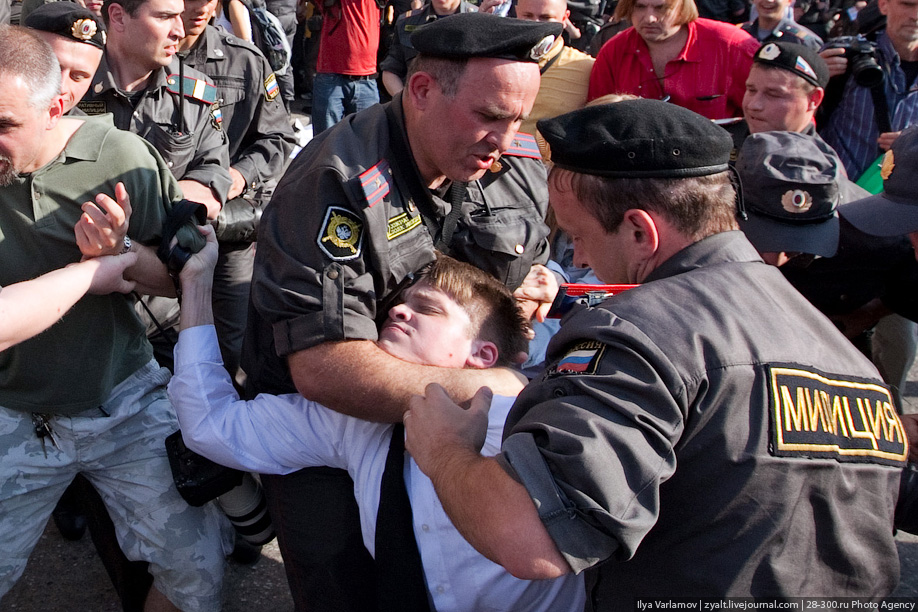
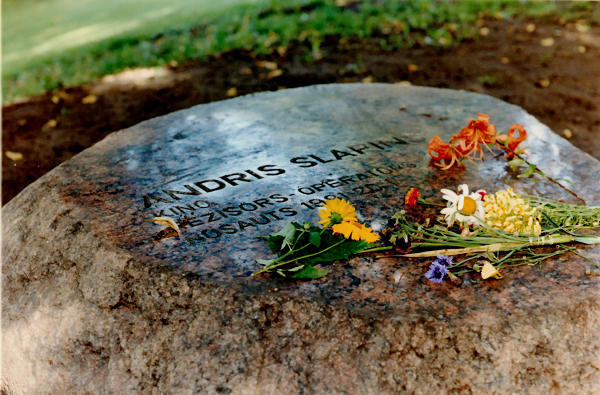

_02.jpg)

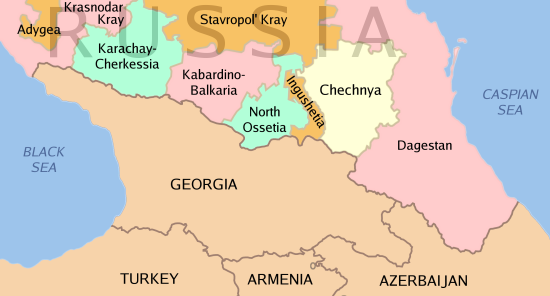


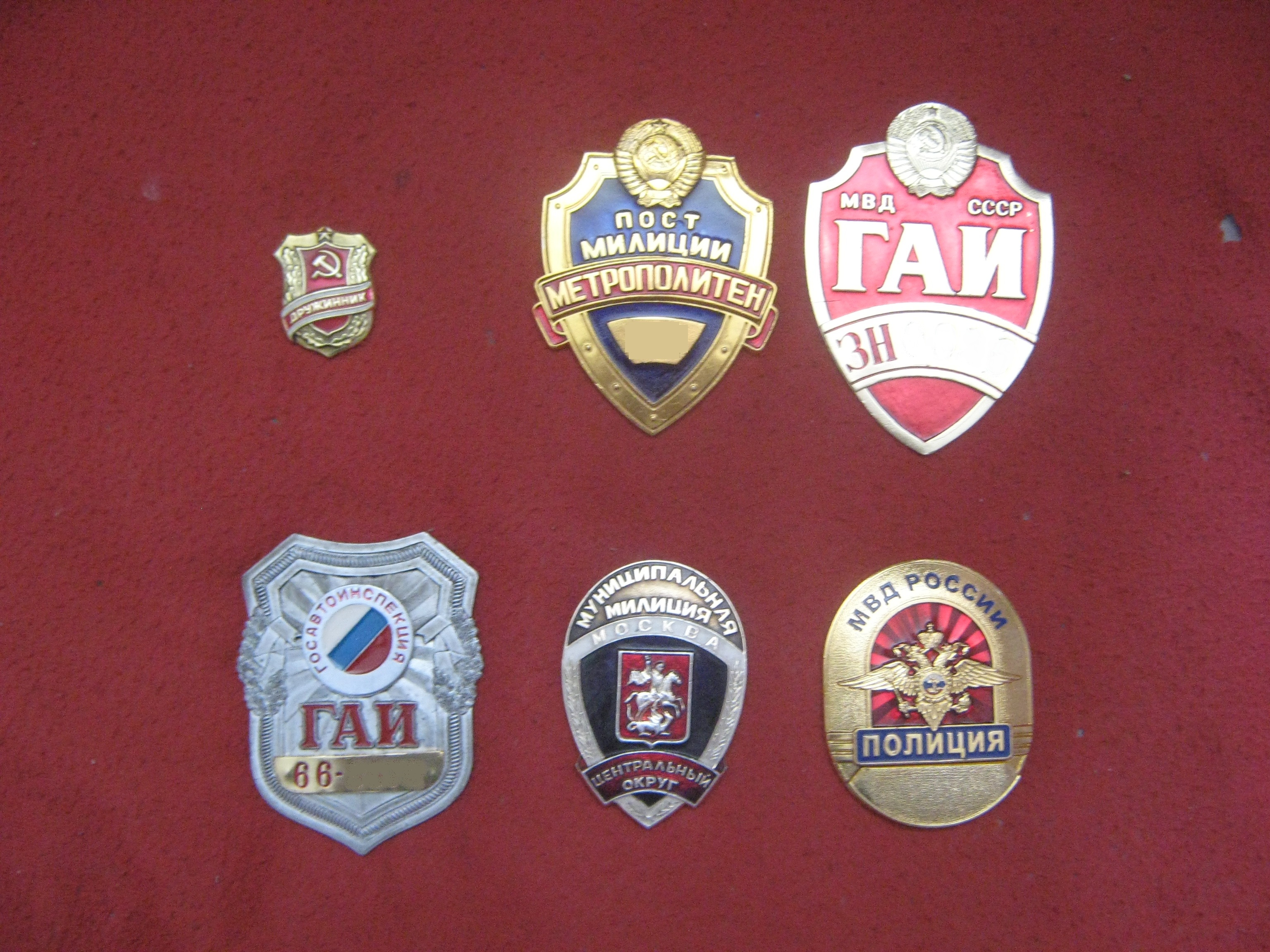
.jpg)
